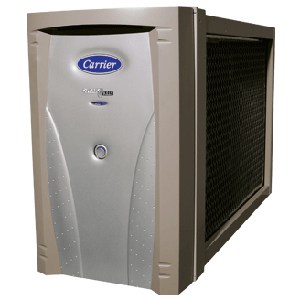As much as you may want to trust that you will be able to breathe in pure, clean air wherever you happen to be, the reality is that people have little control over this once they step out of the house. There are just too many air pollutants to be found outdoors — cigarette smoke, vehicular smoke, dust from construction sites, fumes from industrial areas, and pollen from plants are just a few examples.
Dangers from the inside
What’s even more alarming, however, is that maintaining indoor air quality is a challenge even inside your own home. Once you open the windows, for example, you can easily let in pollen and other allergens from your garden. If your pets sleep in the same bed as you, you can breathe in the fur and dander they shed. Moist corners of the house can lead to the growth of harmful molds. Each time you cook, your gas cooking stove expels gaseous pollutants. And the very air conditioning and heating units you use could be circulating bacteria and dust mites throughout the house, no matter how often you clean your home.
For households with children or adults who are particularly susceptible to allergies and respiratory difficulties, poor air quality can easily trigger health problems that simply won’t go away.
A practical solution would be to acquire home air purifiers that can help improve the quality of the air that circulates within your home. There are many types available in the market, so you’ll need to know about each so that you can select the best one for your particular needs.
Here is a brief overview provided by the U.S. Environmental Protection Agency:
 Mechanical and Electronic Air Cleaners— These can remove particles from the air and capture them on filter materials. The electronic variants have a more elaborate technique called electrostatic attraction for trapping particles. They draw air through an ionization section, and the particles receive an electrical charge. These charged particles then accumulate on flat plates that are oppositely charged.
Mechanical and Electronic Air Cleaners— These can remove particles from the air and capture them on filter materials. The electronic variants have a more elaborate technique called electrostatic attraction for trapping particles. They draw air through an ionization section, and the particles receive an electrical charge. These charged particles then accumulate on flat plates that are oppositely charged.
Gas-phase Air Filters— These filters use a sorbent (e.g., activated carbon) to adsorb the pollutants. However, such filters are only designed to remove one or more gaseous pollutants, and so are not completely effective in purifying the air if different kinds of pollutants are present.
UVGI Cleaners— Ultraviolet Germicidal Irradiation or UVGI cleaners destroy the indoor air pollutants by using UV radiation from lamps. These are ideal for use in combination with air filtration systems instead of on its own, as a replacement of those filters.
PCO Cleaners— Photocatalytic Oxidation or PCO cleaners work like UVGI cleaners to destroy the pollutants. Along with a UV lamp, it uses a catalyst that reacts with light.
Ozone Generators— These air cleaners make use of an electrical discharge or UV light to produce ozone which addresses air particles, gaseous pollutants and biological pollutants. However, ozone is a known lung irritant and can cause negative health effects. Even if the ozone produced falls within public health standards, these generators have demonstrated poor performance in removing most air contaminants. To avoid risking the development of even more respiratory disorders because of the ozone, consumers are advised to stay away from ozone generators marketed as air cleaners and opt for the other types instead.
In addition to choosing one of these air purifying devices, the EPA recommends safe and effective methods for reducing air pollutants in the home, such as adding outdoor air ventilation and taking control of or fully eliminating known pollutant sources.




